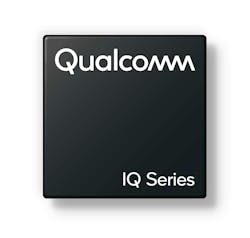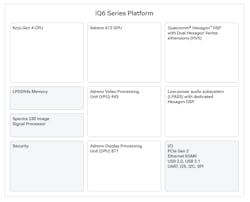Qualcomm Unveils Dragonwing for Industrial and Enterprise Apps
What you’ll learn:
- The scope of Qualcomm’s Dragonwing portfolio.
- Products currently under the new brand.
- What applications will take advantage of the new technologies?
Qualcomm is branching out beyond its Snapdragon chips with its new Dragonwing solutions aimed at industrial and enterprise applications targeting manufacturing, energy, telecom, retail, and more. The new branding covers a range of industrial, networking, edge and IoT products, similar to AMD and NVIDIA, with hardware designed for the industrial market.
“The Dragonwing brand represents our industrial and embedded IoT, networking, and cellular infrastructure solutions. Leading-edge AI, high-performance, low-power computing, and unrivaled connectivity are built into custom hardware, software, and service offerings designed for speed, scalability, and reliability,” stated Qualcomm in its press release.
“With Dragonwing products, companies can unlock smarter decision-making, increased operational efficiency, and faster time-to-market. This is crucial for industries like energy and utilities, retail, supply chain, manufacturing, and telecom, enabling businesses to expand into new opportunities, extend their competitive edge, and win in evolving markets.”
Details Surrounding the Dragonwing Solutions
Dragonwing will encompass new hardware for industrial and enterprise applications, including chipsets, CPUs, APUs, and modems, as well as its IQ and Q series of processors. Both encompass entry-level to top-tier silicon, delivering increased industrial-grade and power-efficient performance in the harsh environments of the manufacturing industry.
The IQ series (Fig. 1) adds integrated safety features such as error-correction-code (ECC) memory and a high-performance MCU-like subsystem that incorporates an industrial-grade safety island (SAIL). The SAIL is the mechanism through which the chip can access, manage, and monitor IP within the design, representing a mix of different safety support levels. It monitors for issues, manages testing, and communicates any issues to the larger system.
The IQ series is designed around Qualcomm’s Kyro CPU and comes equipped with an Adreno GPU, a pair of Hexagon Tensor Accelerators (delivering 100 INT8 TOPS), and LPDDR5x RAM. It can also handle extreme temperatures ranging from −40 to +115℃, suiting them for industrial applications, including industrial robotics, factory automation, drones, industrial gateways and more.
Qualcomm’s Q series offers low-power, maximum heterogeneous computing, Wi-Fi 7 connectivity, and vivid graphics and video with optimized AI architecture for edge AI processing. The series also packs the Kyro CPU and features an integrated Arm Cortex-X3 processor, up to 16 GB of LPDDR5/5x RAM, a Hexagon dual-core AI processor, Adreno GPU, and a Spectra ISP. In addition, an integrated Wi-Fi 7 modem (only with the QCM8550) is included for wireless applications.
Dragonwing also features the company’s NPro series of Wi-Fi 6/6E and Wi-Fi 7 modems that take advantage of the 6-GHz spectrum, providing simultaneous operation in 2.4-, 5-, and 6-GHz spectrum bands, respectively. The modems take advantage of the company’s Multi-User Traffic Management. They’re designed to provide advanced scheduling algorithms and buffering with bidirectional data support, up to 37-user OFDMA support per channel, and spatial multiplexing 4-user UL/DL MU-MIMO support per channel.
The Max User Architecture is implemented, providing enhanced network stability and sustained throughput for up to 2,000 users. It’s designed to support 33-Gb/s peak aggregate wireless-system capacity. Figure 2 shows the processor's complete block diagram.
Dragonwing's AI Factor
The Dragonwing brand emphasizes the use of artificial intelligence in its latest offerings. The hardware and software platforms deploy and run machine-learning models on IoT devices. Their AI capabilities help enhance control, management, tracking, signal processing, and more for network devices, industrial systems, automation, and utilities within the IoT ecosystem.
Qualcomm makes it clear that the company isn’t abandoning Snapdragon—it will remain the name of the company’s commercial products, such as chips for smartphones, laptops, wearables, and other mobile devices. Dragonwing is a separate entity and clarifies what tech is targeted for business and industrial use. According to Qualcomm, it will debut the Dragonwing technologies at MWC (March 3-6) and at embedded world (March 11-13).



